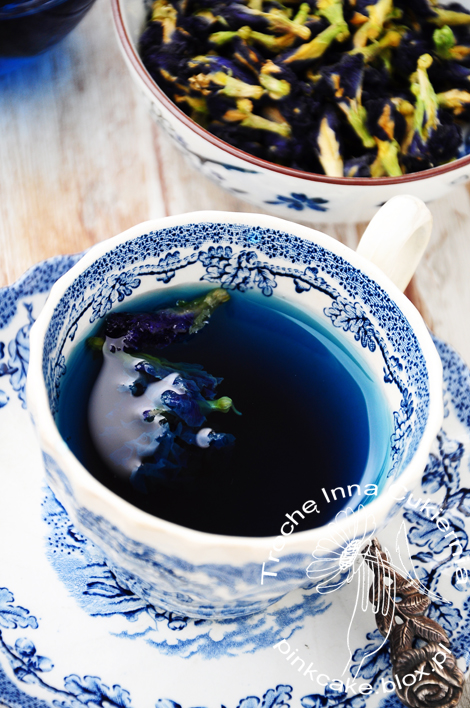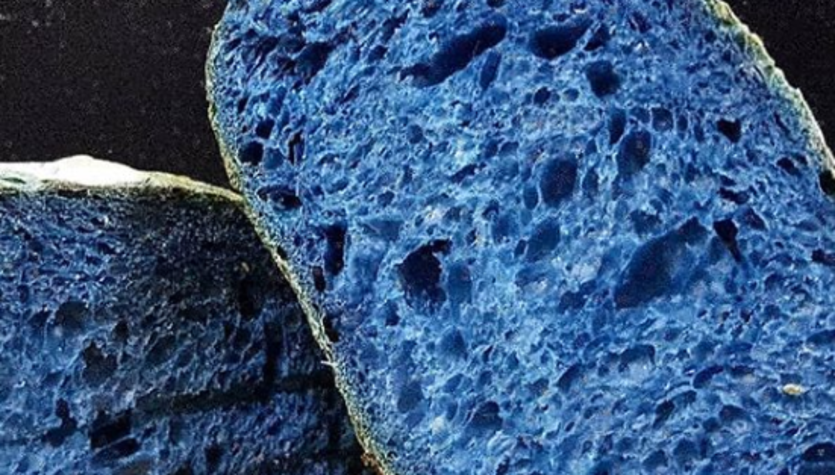

06 Dec ART-717- The performance – what does the color taste like-blue ?
Preparations for the first performance in the series – what does the color taste like?
First, the psychology of color
It is said that specialists in color psychology have conducted research that shows that blue suppresses the human appetite. Why? What’s the meaning of that? Is it about the association with the Ocean-Primother of Life and the taboo imprinted in the human brain – because who would like, who would dare to eat the primeval mother? And is it possible that our food response to blue is genetically determined?








Our “blue food anti-preferences” are hard to pin down from the evolutionary point of view. One would assume that there were more poisonous foods among naturally occurring blue things than among things of other colors, which was fixed in the genes. But the color blue is not in the food for human nature is very common and probably never was. It also did not sign up in our perception as a warning color, on the contrary – it is considered calming, and soothing (like water and sky). Besides, if from the beginning of time man avoided eating blue things, then there should be more of them in the world now because that’s how natural selection works (of course, this is a big simplification of the matter). Currently, blue food is not as censored as it used to be.
Have you ever wondered what ingredient is behind their wonderfully blue shade? No, it doesn’t have to be a synthetic dye from a tube. To make a similar dish, you can use healthy, natural dyes, which, apart from the color of the dish, will also enhance its nutritional value. blue food coloring has been added to candies, jellies, ice cream, beverages, and medicines for a long time. You can also buy it in the form of a powder or solution and use it alone to dye Easter eggs, cakes, and if you want – tea or soup. Not everyone finds blue food unappetizing because of its artificiality.
Genetics has also contributed to the creation of blue food products in the form of traditional crossbreeding and the selection of plants with desirable characteristics. The genetic manipulation carried out by genetic engineering methods in the marketing of blue crops is not mentioned, but it is known that if it were mentioned, the products from such crops would be called GMOs and sales would have to fall. On the basis of a variety of maize with dark violet grains, known for thousands of years and cultivated by Indians, scientists have grown blue maize, which – as the traders selling it emphasize – is not a GMO product. There were blue popcorn, blue flour and corn grits, blue (and in my opinion rather blue) bread, blue tortillas, blue muffins, and other products in this color, advertised as gluten-free and full of healthy “bioactive substances”. The response from buyers has been so positive that a real boom in blue vegetables and fruits is predicted. As they must come from genetically modified (and often transgenic) plants, and in the modern world the consent to GMO crops is very limited, they will rather be niche products. Teresa Łabza, a painter by education, a specialist in decorating cakes, and an admirer of wild, forgotten plants and natural food coloring, points out that two important aspects to remember when using natural plant dyes are pH and temperature. – Clitoria gives a very nice color, but it works only in certain situations. It colors best when it is made into an infusion, so it is used in coloring e.g. jellies, coconut milk, or other liquid products. This plant is very sensitive to pH – if we change the pH of the liquid by adding, for example, lemon juice, the color changes from blue to pink-purple – he says. Małgorzata Kalemba-Drożdż adds: – Most blue dyes belong to the group of anthocyanins, which change color under the influence of pH. In an alkaline environment, they turn green, and in an acidic environment, they turn purple and pink, which is why they can cause problems when used in some dishes. They work best in dairy products and aqueous extracts whose pH is slightly alkaline or neutral.
Mallow, wildflower, and cornflower also stain the infusions blue, having an effect similar to clitoria (although the color is less stable). The cream can be tinted with violets, but you need to use quite a lot of them to get a sufficiently intense shade. In dry pastries, Małgorzata Kalemba-Drożdż suggests using red cabbage, whose anthocyanins turn blue in the presence of eggs. The health-promoting nature of plant natural dyes is their great advantage. However, you have to take into account that not every shade and not in all conditions will be possible to obtain.
The use of artificial dyes is simpler and more predictable and does not require too much knowledge, but the natural ones open up a wide field for experiments. A similar principle applies to the amount of both artificial and natural coloring substances: usually more should be added to obtain more intense shades.
The use of artificial dyes is simpler and more predictable and does not require too much knowledge, but the natural ones open up a wide field for experiments. A similar principle applies to the amount of both artificial and natural coloring substances: usually more should be added to obtain more intense shades.
Apparently, in the past, Curacao liqueur was colored with blue Indian dragonflies (until they were brought to the brink of extinction …). Some edible flowers are naturally blue: cornflowers, pansies, chicory, and borage. Unfortunately, my attempts to dye food with cornflowers can be classified as rather unsuccessful. Fortunately, in terms of blue food, there is also Clitoria ternatea, an Asian plant from the Fabaceae family with navy blue-blue flowers.
Clitoria, also known as blue pea, butterfly pea, and pigeon wings, is a herb used in Ayurvedic medicine. It is credited with anti-stress and memory-enhancing effects. Clitoria flowers have been shown to have antibacterial, antipyretic, anti-inflammatory, analgesic, diuretic, antidiabetic and relaxing effects, which is probably due to the high concentration of anthocyanins.
There is a group of chemical compounds in nature called anthocyanins (for the initiated – anthocyanins are classified as flavonoids and glycosides). These are dyes sensitive to the acidity of the chemical environment in which they are found. The rule says that in acidic solutions they take on a red color, in solutions close to neutral – violet, and in alkaline solutions – blue.
It is also known that their color is influenced by metal ions and oxidants. By themselves, they bind free radicals, so they have a protective and antioxidant effect on cells. Anthocyanins are present in many flowers (in the petals) and fruits (mainly in the skin). It is thanks to them that roses, cherries, and apples are red, irises and some types of onions – purple, and delphiniums and grapes – blue. Anthocyanins also give flowers and fruits a “black” color – in fact, a very, very dark purple or dark blue. Examples include blackberries, blackcurrants, eggplants, exotic chantries (Tacca chantrieri) called bat-flowers, and varieties of “black” roses, hollyhocks, and petunias bred by gardeners. In blueberries, tallows, and some grape varieties, the skin contains so much blue-violet anthocyanin that it is perceived as black. But can we say that since the dyes are blue, the skin is also blue, and since the skin is blue, we have blue food? And can we even say that a given dye is blue when under other conditions it may be red?


Sorry, the comment form is closed at this time.